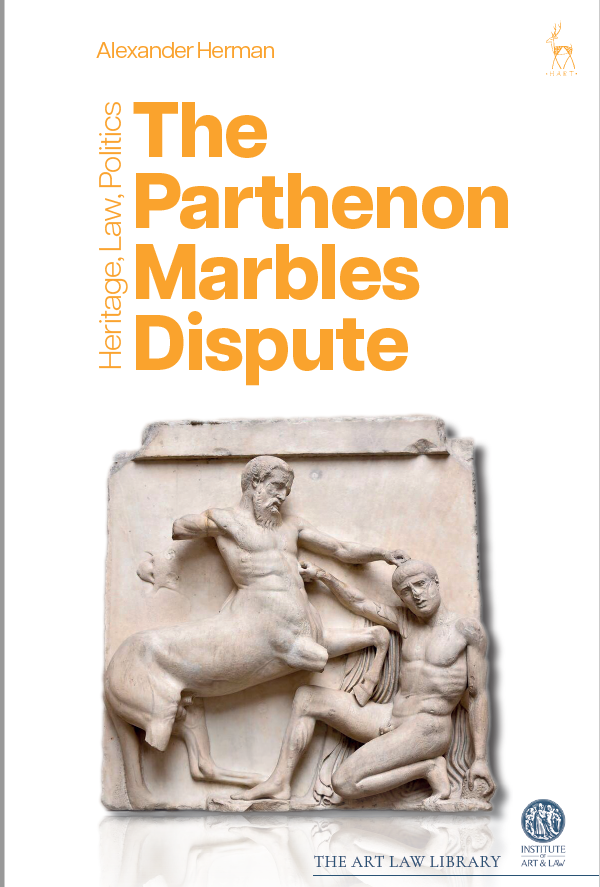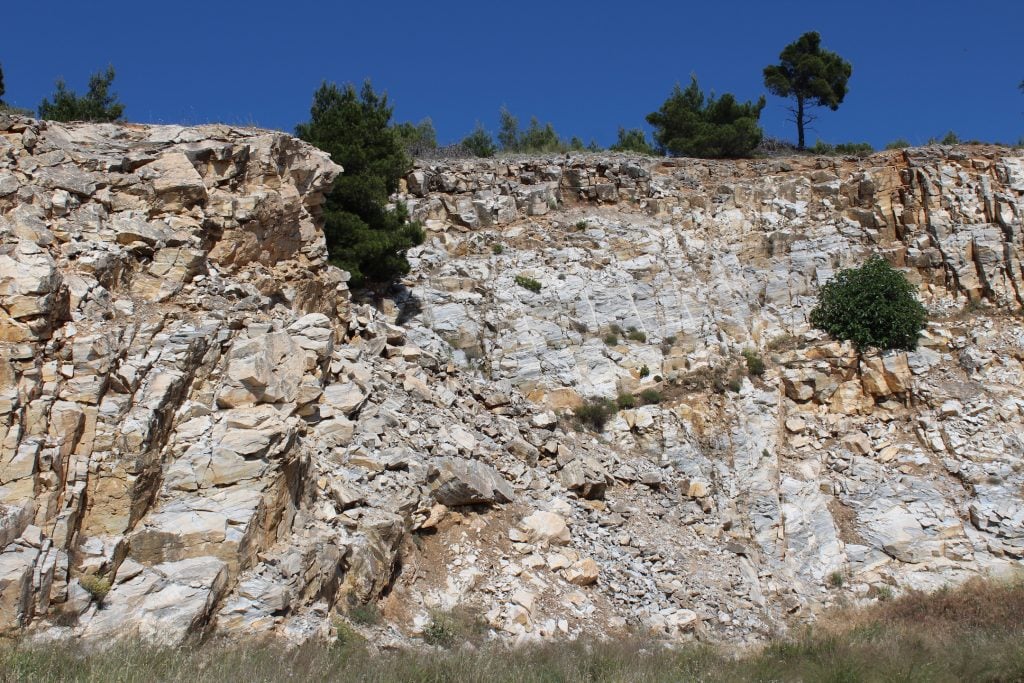Art World
The Parthenon Marbles Dispute: From the Slopes of Mount Pentelikos
Read an excerpt from Alexander Herman's new book "The Parthenon Marbles Dispute: Heritage, Law, Politics."

Read an excerpt from Alexander Herman's new book "The Parthenon Marbles Dispute: Heritage, Law, Politics."

Alexander Herman

The following essay has been adapted from the new book The Parthenon Marbles Dispute: Heritage, Law, Politics (Hart / Bloomsbury, 2023) by Alexander Herman, director of the Institute of Art and Law.
I begin my journey on a hill in Greece. It is an enormous mountain range to the northeast of Athens. On one side is a vast quarry and at the mountain’s tallest point stands a modern radio tower. It is called Pentelikos Mountain by the Greeks, an obvious link to its ancient name, Mount Pentelicus.
The mountain is unique by reason of the pristine white marble found within. It was from these slopes that the Athenians of the fifth century BCE quarried the raw material that would be carved into the Parthenon and other temples on the Acropolis. One can still see today the glistening white specks on the mountainside, like scatterings of ivory across the landscape.
I have been brought here by a friend who has hired a local driver. When we come to a plateau, the car stops. I slowly begin the hike over rocks and past patches of dry shrubbery. I soon find what I am looking for: a series of mounds protruding here and there from the ground, Pentelic marble.

The Parthenon Marbles Dispute: Heritage, Law, Politics (Hart / Bloomsbury, 2023) by Alexander Herman
It is tempting to imagine these pieces being selected by ancient surveyors, dug out by labourers and loaded onto wooden carts ahead of that momentous descent. But of course the choice pieces were all taken away.
From my perch, I can survey the shimmering Athenian sprawl, which has made its way to the foot of the mountain and has even begun to creep up the far side. In the distance I first make out the pyramid-shaped Lykavittos Hill and then, squinting, the flat top of the Acropolis to the right of it. It beggars belief that ancient engineers were capable of designing and laying a road that stretched to the centre of Athens. Along this road each of the blocks would have been pulled. What is interesting here is that, despite having access to the most developed trade routes of the ancient world, Athens chose to use Attic material. The project of building the Parthenon and its sister structures would be an intensely local one.
The Parthenon was not the biggest of ancient temples. Nor was it the first of the Doric order. The inclusion of sculpted scenes was not in itself unique either. So what makes this monument so important today?
There are perhaps several reasons why the Parthenon has become, more than any other building, the iconic monument of ancient Greece. This was the high point of Athenian democracy, when Pericles was at the peak of his powers and the mechanisms for citizen control of the polis were strong (though not, of course, for women or slaves). In a way, the Parthenon was a democratic structure: it needed citizen approval to be built and the subject-matter of its frieze included the people of Athens, a true first in Greek monumental sculpture. Because today we live in democratic times, we tend to have a predilection for remnants that connect us to the Athenian prototype. For this reason, the Parthenon as a symbol continues to dominate.
The accumulated whole works perfectly in an overall harmonious scheme. The structure was built according to a consistent 4:9 ratio. Its designers took pains to offset inevitable optical illusions by subtly piecing it together with sloping lines throughout to ensure that the Parthenon looks right. And while examples of pediment sculptures, metopes and a sculpted frieze can be found elsewhere, only on the Parthenon did the three elements come together in such a fulsome display. No expense had been spared.
Another reason to explain the Parthenon’s primacy today is its symbolic position within the modern Greek State. This is the way one sees it from the vantage point of Mount Pentelikos, looking down at the vast metropolis, as the twinkling speck at its very centre. Athens loomed large in the minds of early modern visitors and so the Parthenon remained for them the architectural embodiment of that ideal. When Greece gained independence from the Ottoman Empire in 1832, Athens was chosen as the capital, not because it had been an important population or commercial centre but because of the past glory it represented. As modern Greece developed, the city of Athens grew with it. Today, a third of the country’s population is Athenian, and the city remains the arrival gate for visitors from all over the world. The Greek Parliament, the ministerial buildings and most embassies are a stone’s throw from the Parthenon.

Mount Pentelicus. Photo by Alexander Herman.
And so, by a combination of factors – a close relationship to the origins of democracy, the structural harmony of the building and its position in the modern capital – the Parthenon is presented to us as the quintessential icon of the ancients. Not only does it represent Ancient Greece to the world, but it has come to serve as one of the lasting symbols of world heritage.
Every day, tourists flock to what is known in Greece as the ‘Sacred Rock’. The public is free to choose the sites it visits. But the Greek state chooses which sites to support. In the race to become the emblem of modern Greece the Parthenon certainly triumphed, and for good reason.
And yet the sculpted marble from the famous Parthenon seems to go back much further than what most of us realise: they are in fact millions of years old. To a certain extent, the architects and sculptors of the fifth century had sought in their own time to exploit a natural resource, that of Pentelicus, moulding it into the columns, architraves and sculptures that would reflect their reality and tell their stories.
At times the raw material refused to conform. While it may have been hoped the monuments would remain a testament to Athenian glory, they of course would change with time. Pentelic marble does not remain white: it undergoes a process of oxidisation.
Nothing is truly written in stone.